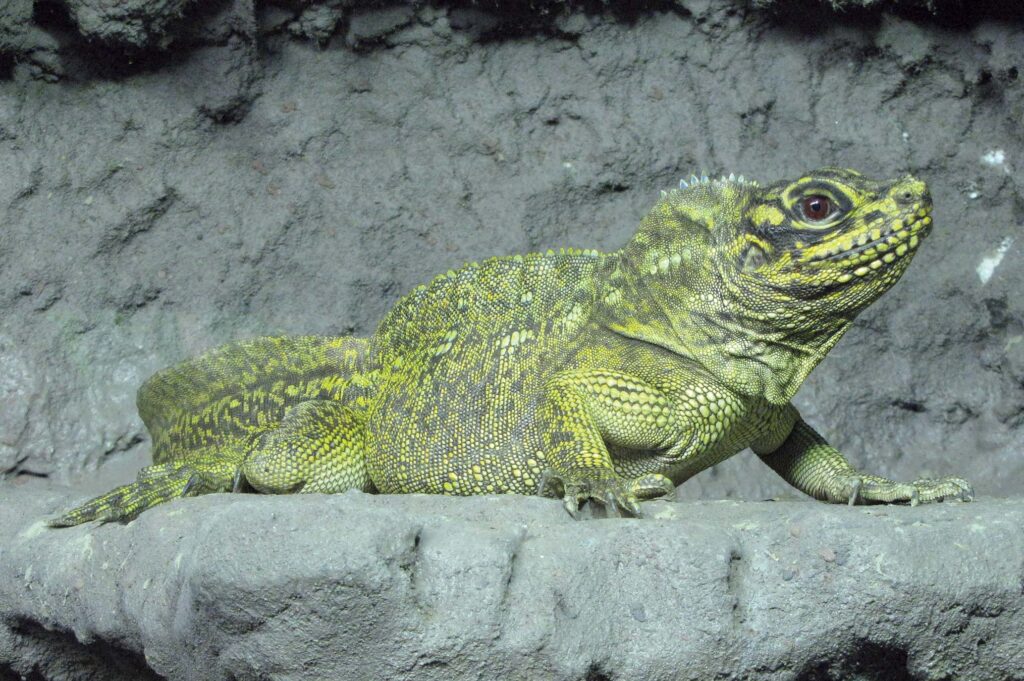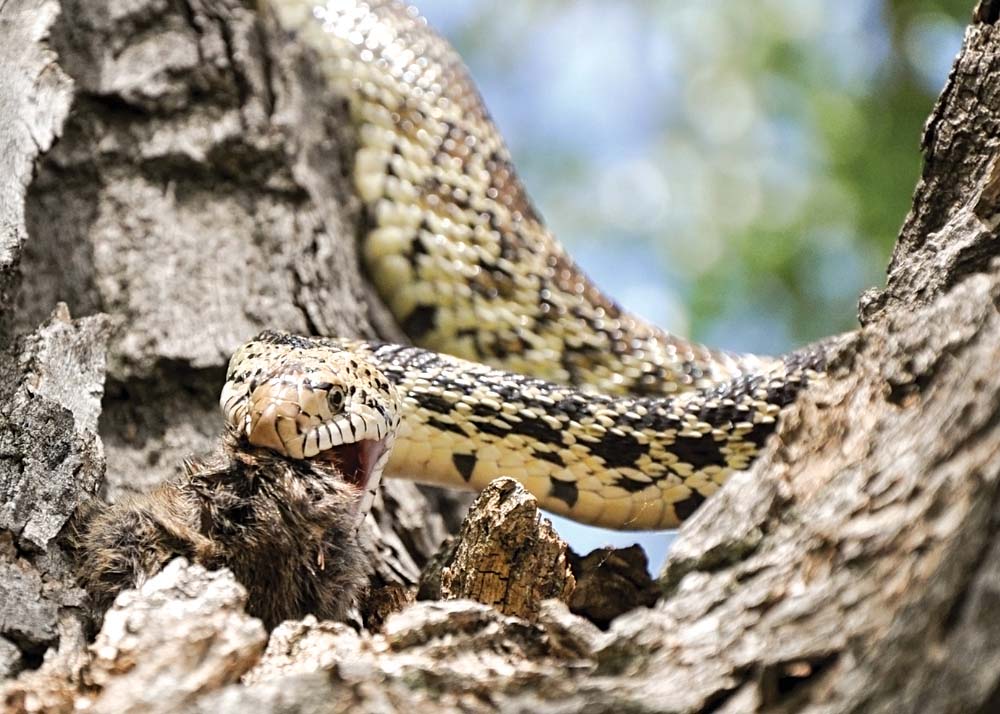The Philippines is blessed with a bounty of rich natural resources and a booming ecosystem because of its diverse archipelago structure — that is, because of the fact that it’s a cluster of islands.
Thanks to the different geographic features of each individual area, the Philippine islands have become conducive to the survival of many ecosystems, such as forests, grasslands, sandy beaches, brackish waters, bodies of saltwater, and even caves. Among these, thick jungles and heavy forests are the ones that have become home to most of our endemic species of Reptiles.
Let’s shine some light on a few of the most unique and interesting Reptiles found only in the Philippines: their vulnerability status, ecosystem, life span, diet and even some fun facts about each of these scaly friends.
PHILIPPINE SAILFIN LIZARD (Hydrosaurus pustulatus)
Here are a few things you should know about this Reptile.

The Philippine Sailfin Lizard not only swims fast, but also briefly walks on water. (Wikipedia)
- According to the IUCN, they are a vulnerable species because of habitat loss, hunting (they are eaten as exotic food), and the pet trade.
- As for their preferred environment, they live next to lowland rivers and are found in trees overhanging water.
- Their life span is around 20 years or more.
- They are omnivores. They feed on greens, fruits, and animals like Insects, Fishes, and Crustaceans.
When threatened by predators, these lizards will drop to the water from their overhanging trees and swim swiftly to safety using the iconic sailfins on their backs and tails. They have the ability to walk on top of water for short distances when fleeing, because of their webbed shaped feet.
EXPERT SWIMMERS
Hydro means water and saurus means lizard — that means that the Philippine Sailfin Lizards are literally Water Lizards. This explains why they are excellent swimmers!
PHILIPPINE CROCODILE (Crocodylus mindorensis)
Here are a few things you should know about this Reptile.

The Philippine Crocodile is often mistaken as the Saltwater Crocodile despite being small. (Gregg Yan | Wikimedia Commons)
- According to the IUCN, Philippine Crocodiles are critically endangered. Their existence is threatened by habitat loss, pollution, illegal fishing, and even mistaken identity: They are often mistaken as the infamous Saltwater Crocodile, known to eat people.
- People tend to kill these Crocodiles when encountered. However, due to their size, Philippine Crocodiles aren’t likely to attack humans unless provoked.
- They generally live in coastal waters, mangroves, rivers, and brackish waters.
- They can live up to 70 years or more.
- They are carnivores.
CRITICALLY ENDANGERED
There are an estimated fewer than 100 Philippine Crocodiles left in the wild, which is why they are nationally protected by law, specifically Republic Act 9147: The Wildlife Act.
Killing a Philippine Crocodile carries a minimum penalty of six years imprisonment and/ or a fine of Php 100,000.
YELLOW-HEADED WATER MONITOR (Varanus cumingi)
Here are a few things you should know about this Reptile, also known as the Philippine Water Monitor.

The Yellow Headed Water Monitor prefers to live in mangroves. (Wikipedia)
- Thankfully, according to the IUCN, these Monitor Lizards are of least concern. They are not currently in danger, but may face threat of habitat loss due to the destruction of their small native ranges and poaching.
- They prefer to live in mangroves, lowland rivers, and forests.
- Expect them to live to about 20 years.
- They thrive on a carnivorous diet.
NEW SPECIES
They were first identified as a subspecies of Varanus salvator but later reclassified as their own species entirely back in 2007.
PHILIPPINE COBRA (Naja philippinensis)
Here are a few things you should know about this Reptile.

The Philippine Cobra is considered to be one of the most venomous Snakes in the world, although they usually reserve their venom for non-human prey.
- The IUCN says they are near threatened due to habitat loss.
- You might find them in forests, lowlands, and sometimes, in human settlements. They generally enjoy places with large bodies of water and an abundance of Rats and other small prey like Lizards, Birds, and other Snakes.
- They can survive up to 20 years.
- Philippine Cobras are carnivores.
They tend to attack humans only when people get too close to their territory. They consume a lot of Rats, which makes them great neighbors to humans, especially in farmlands where Rodents tend to eat the crops.
RELATIVELY HARMLESS
They are one of the 14 Cobra species who spit venom at whoever threatens them. However, when confronted by a human, they would much rather run away than attack.
GRAY’S MONITOR (Varanus olivaceus)
Here are a few things you should know about this Reptile, also known as Butaan.

Despite their huge size, the Gray’s Monitor is a shy creature. (Wikipedia)
- The IUCN categorizes them as vulnerable. They are being killed by poachers for the illegal pet trade and being hunted as exotic food.
- They live in forests amongst tree canopies.
- Their life span is about 20 years.
- As omnivores, they feast on fruits, Snails, Crabs, and Insects.
One of their most fascinating traits is that they are part of a handful of Monitor Lizard species who primarily eat fruits — that is, they are frugivores, instead of relying heavily on animal flesh like other Monitor Lizards.
This makes them key contributors to their ecosystem, since they have been known to be fantastic fruit seed distributors in their natural habitat.
SHY DESPITE SIZE
Butaans are one of the largest Monitors in Asia, but they’re also surprisingly shy.
SCALY CREATURES DON’T HAVE TO BE SCARY!
The Philippines is home to hundreds of endemic Reptiles and other animals who have yet to be discovered. Our rich ecosystems have become the sole haven of different species, which is why we must work hard to keep them safe as much as possible.
There are plenty more Philippine Reptiles out there, so I hope you can take the time to read about them. Education can help dispel myths and fear, protecting these animals.
WHY THEY BELONG IN THE WILD
Most, if not all, of the Reptiles mentioned in this list belong to an already small population in various small islands in the Philippines.
Taking them from the wild as illegally-acquired animal companions or food not only puts their species at risk, but also affects the different ecosystems they come from because of the significant roles they play. For instance, some keep Rat populations manageable, while others help sustain forest growth.






